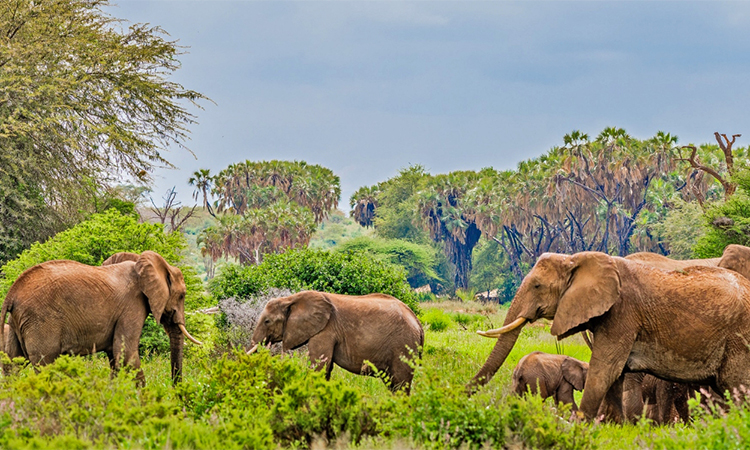Samburu is the most popular reserve in northern Kenya. Wildlife viewing is good, and most big safari animals are easily spotted. The arid environment is home to a variety of north Kenya specials – both birds and mammals.
A village visit to a nearby Samburu homestead is a worthwhile activity.
Wildlife
Samburu offers great wildlife viewing and four of the Big Five are present. Rhinos are absent, but big herds of elephant cross the reserve. Of the big cats, leopards are very rewarding with some habituated individuals giving high-quality sightings. Most interesting are the northern Kenya specials including beisaoryx, lesser kudu, reticulated giraffe, Grevy’s zebra and the odd-looking gerenuk.
Scenery
Samburu protects an area of semi-arid savannah extending from the lovely EwasoNyiro River. The reserve is made up of riverine forest along the water and dry acacia scrub peppered with termite mounds. Koitogor Hill marks the middle of the reserve.
Weather & Climate
When it comes to temperature, hot is the best way to describe Samburu. That said, the average temperature more than halves at night – rug up if you’re heading out on safari when the sun isn’t high in the sky. The Dry season (June to September) lives up to its name, with almost no rain. Similarly, the Wet season (October to May) gives the landscape a regular wash.
Getting There
By road it takes around 6 hours driving from Nairobi, but is an interesting and educational way to see the country. By air there are three airstrips that have daily and sometimes twice daily flights from Wilson Airport in Nairobi. The schedule flights also connect well with other game reserves like Lewa Downs, Meru National Park and the Masai Mara making for a great combination safari in Kenya.

